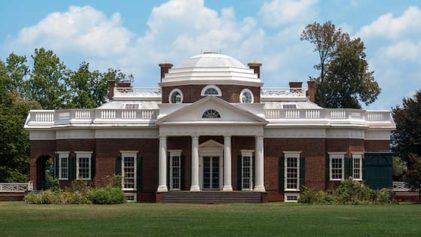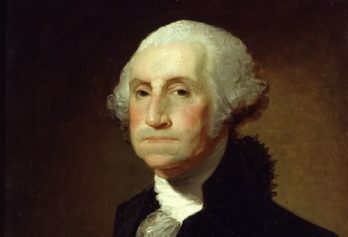Four years after Smithsonian Magazine published photos of Shannon LaNier, a Black descendant of Thomas Jefferson, dressed like his ancestor, many have mixed feelings about him embracing his heritage.
Critics focused on how Jefferson wrote the words “all men are created equal” but never freed his own slaves and started a relationship with LaNier’s direct matrilineal ancestor Sally Hemings, when she was just 14 and he was 44.
The image resurfaced on the X platform with one person simply sharing LaNier and Jefferson’s portraits side by side. But immediately, the trolls began to chime in.
“Thomas Jefferson rollin in his grave rn,” one person suggested,
A few people said that they saw a familiar likeness despite the difference in race, tweeting, “They look the same!” and “I see the resemblance.”
“He look pissed like ‘who blackend thy bloodline’ heada—,” one person joked.
He look pissed like “ who blackend thy bloodline “ headass😂
— WeAreInternet (@weare_internet) October 10, 2024
One comment read, “Why are we glorifying someone who had such a complex and controversial legacy? Just because he’s a descendant doesn’t mean we should romanticize the past without acknowledging its flaws”
“Thomas Jefferson would not have claimed him if he was alive today,” someone else tweeted.
Some brought up the controversy about whether or not the Hemings children are actually descended from the third president or someone else.

Another wrote, “He ain’t had a single mulato child. This is fake history.”
This is historically, untrue. The Thomas Jefferson Foundation, the official estate of the former president, released the statement saying, “A considerable body of evidence stretching from 1802 to 1873 (and beyond) describes Thomas Jefferson as the father of Sally Hemings’s children. It was corroborated by the findings of the Y-chromosome haplotype DNA study conducted by Dr. Eugene Foster and published in the scientific journal Nature in November 1998.”
According to their scientific study, DNA study did prove the paternity of a Jefferson family member and corroborated the ample documentary and oral history evidence.
“Other evidence supports Thomas Jefferson’s paternity as well, including his presence at Monticello during Sally Hemings’s likely windows of conception, the names of Hemings’s surviving children, and the fact that all of her children were granted freedom – they were either allowed to leave the plantation, or legally emancipated in Jefferson’s will, a unique occurrence among Monticello’s enslaved families,” the foundation continued.
LaNier, himself, spoke out about being a descendant of Jefferson, posting an AI version of the portraits where his face and his presidential ancestor’s faces softly morphing into each other’s.
“YES #President #ThomasJefferson had #Black #kids? This is not a flex, just facts! Love it or hate it, I’m here b/c of it. You can’t pick your #family but we can expose their historical injustices! #Jefferson owned over 600 enslaved people and had children with at least 1 of them, #SallyHemings,” he wrote in a caption posted on July 4.
“It wasn’t consensual love b/c she was his property,” he continued, noting the complicated nature of his ancestors’ relationship.
“No need to fight on this page about it! It’s just the complicated truth of American History. I’m the 6th great grandson of Jefferson & Hemings and there are a lot of us! This is why I tour the country speaking about my family, your family, DNA, historical healing and reconciliation. Some don’t want us to know our history, but truth is power! We must preserve the truth… the good, bad & ugly!”
This is not the first time that LaNier has spoken out about is his views on Jefferson, sharing the pride he has to be a descendant but acknowledging the hypocrisy of the Declaration of Independence co-author.
While promoting his book, “Jefferson’s Children: The Story Of One American Family,” in 2020, he called his grandfather “a complex man.”
“I just am conflicted because I wish he would have done more for my family. I wish he would have done more to free this world of slavery,” he said in an interview with NPR. “I mean, he was the most powerful man in the country. He could have done more. And one abolitionist once wrote that never before has a man received such fame for what he did not do – because he wrote those words, all men are created equal. But yet he didn’t practice them.”
LaNier participated in the project with The Smithsonian as a part of a larger collection of history. Originally, when he was asked to participate, they asked him to wear the powdered wig. He declined, stating he did not want to appear white, saying he didn’t want to “become Jefferson,” in an interview about the project with Artnet.com.
During the 2020 project, British photographer Drew Gardner identified several blood relatives of famous historical figures and asked them to pose in their relatives’ likenesses.
While the images are powerful, the stark contrast of LaNier and the white Jefferson will continue to spark controversy, as it is a living witness of the complicated nature of American enslavement of yesteryear and its continued reach into today’s present.


